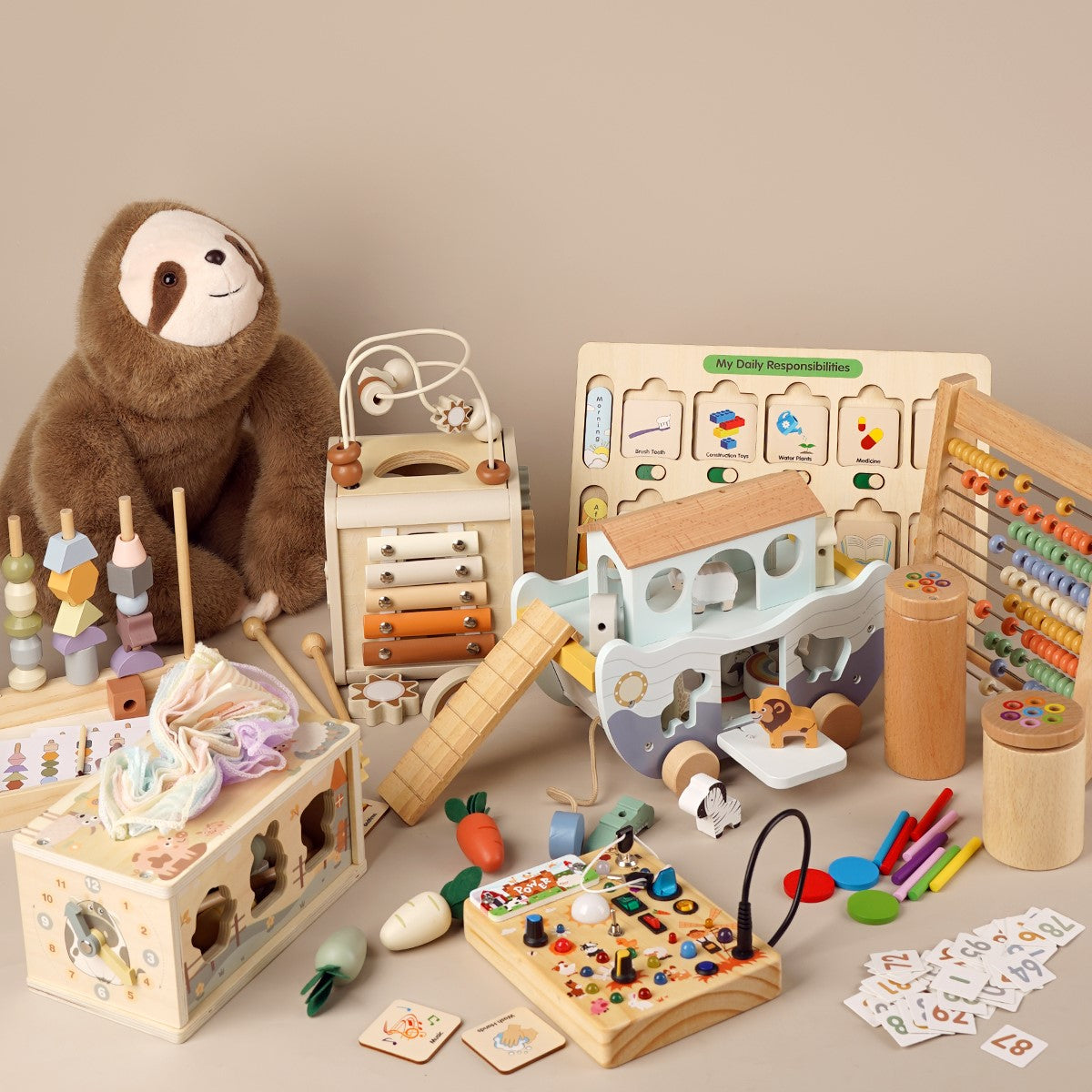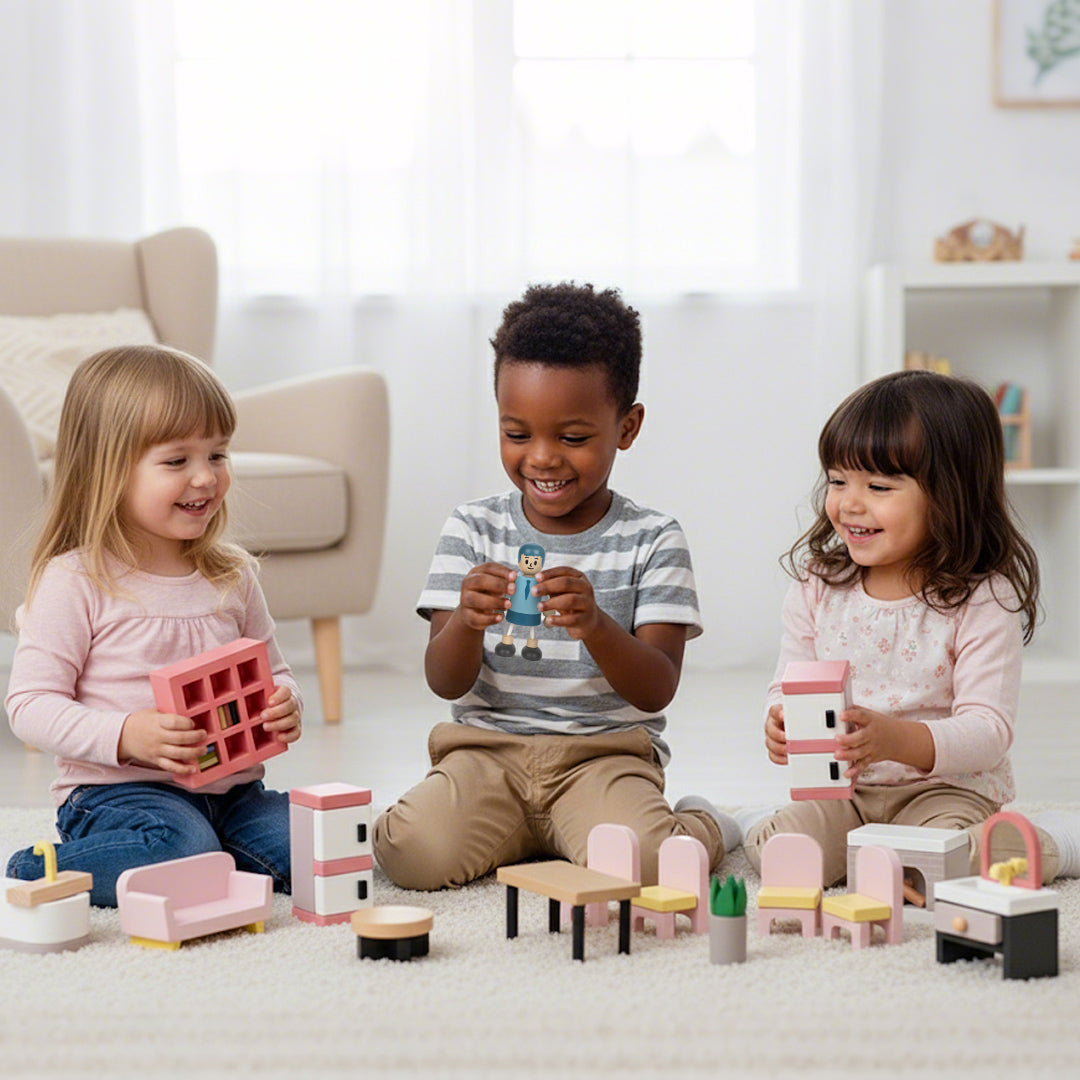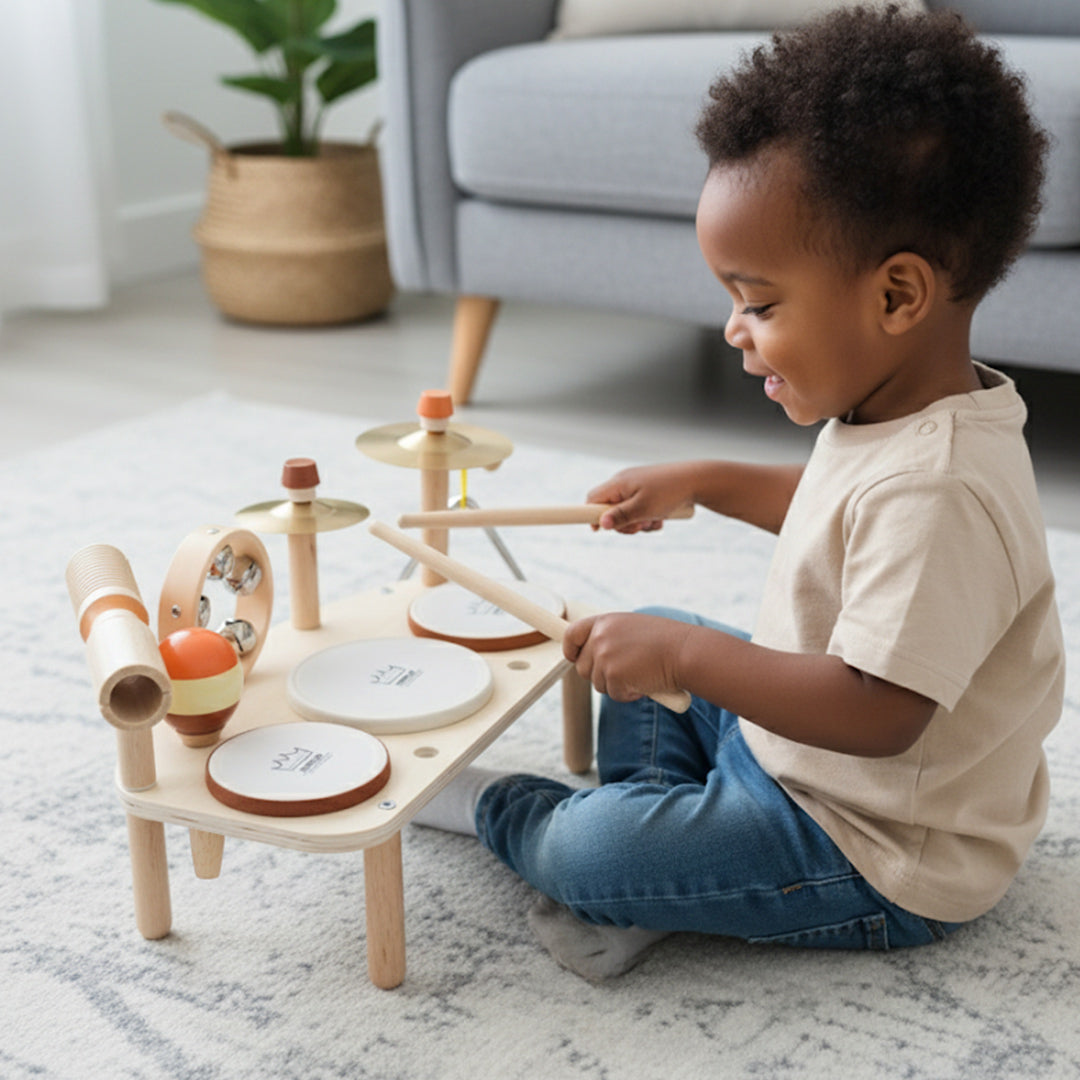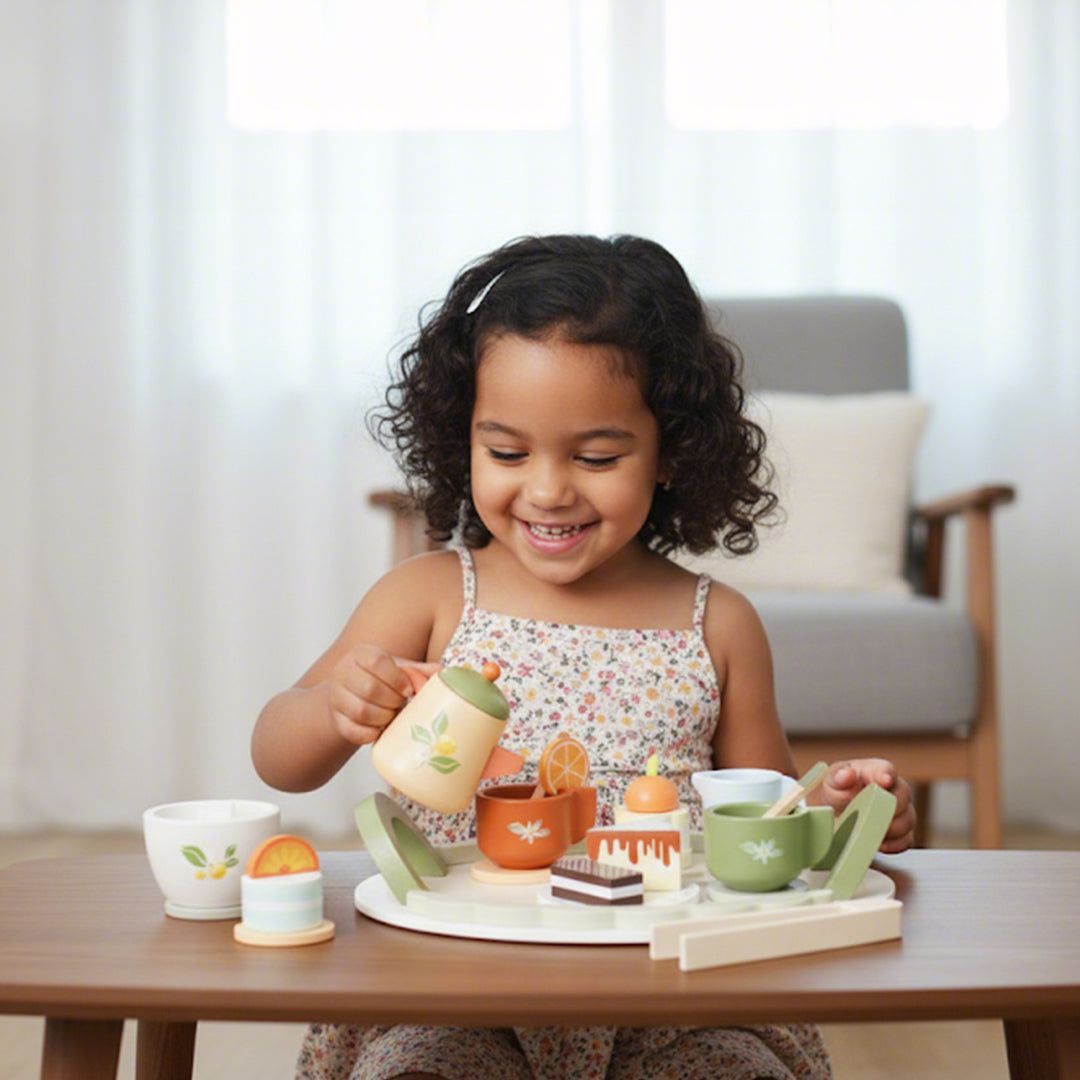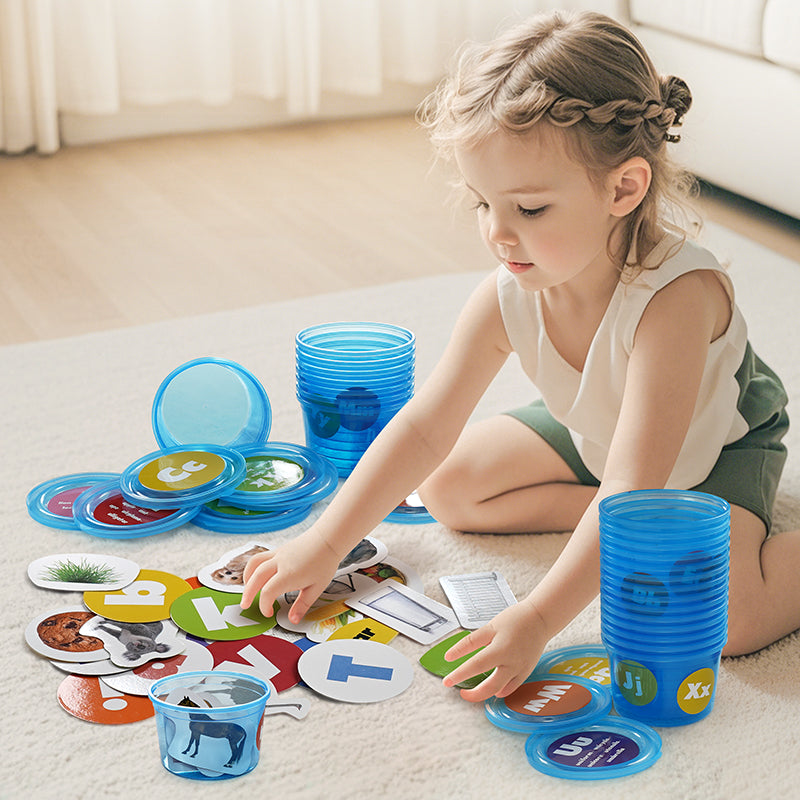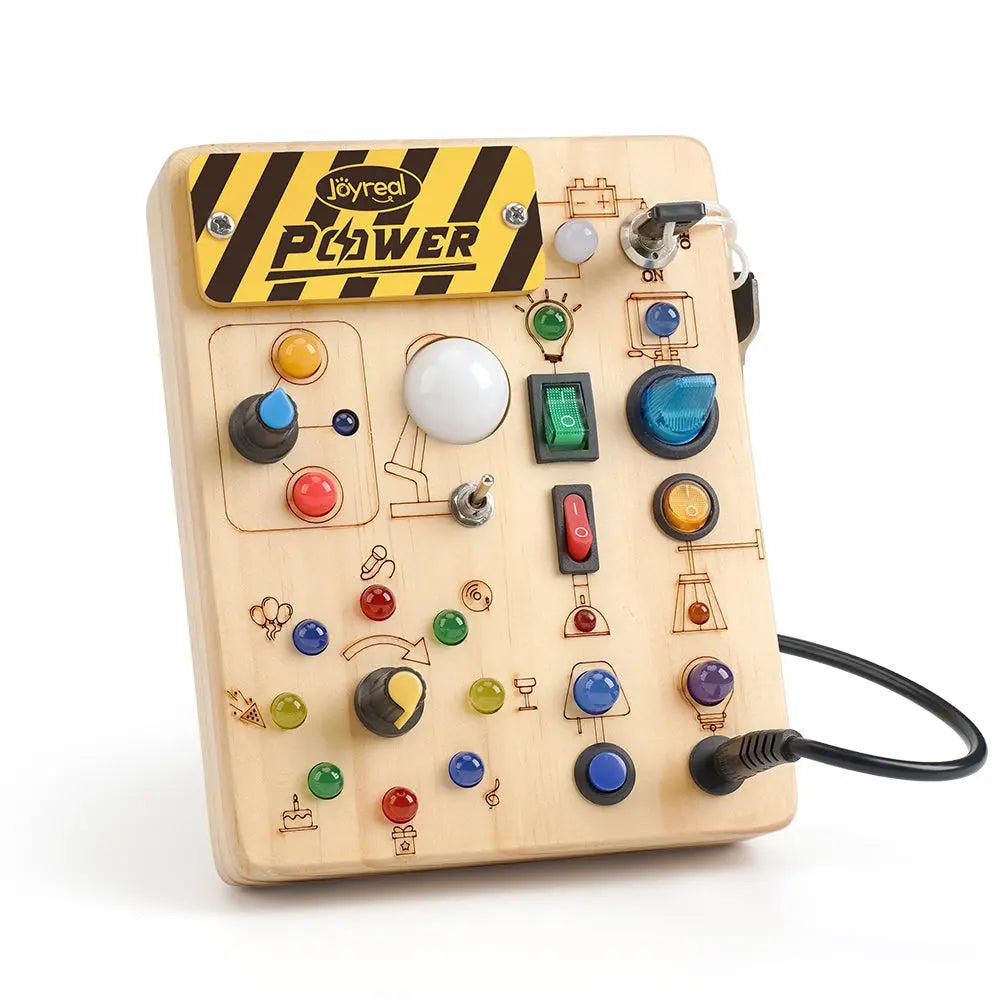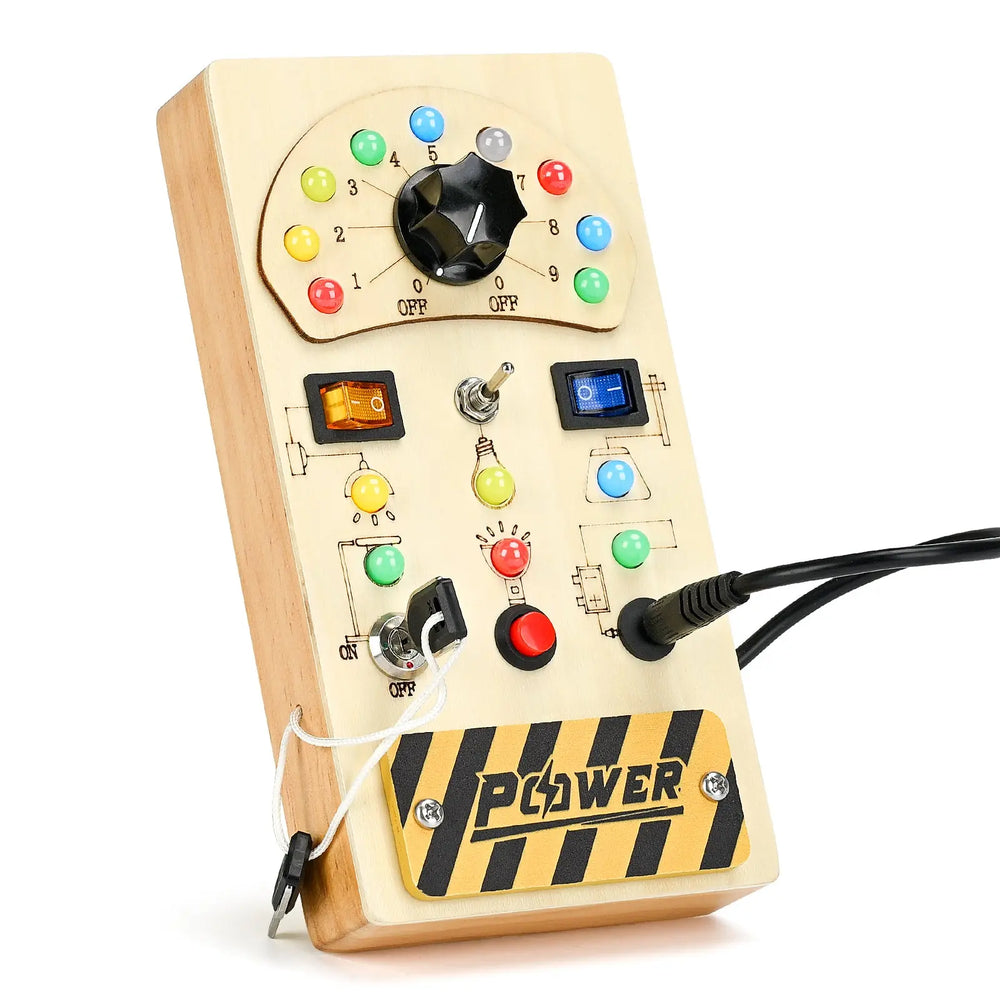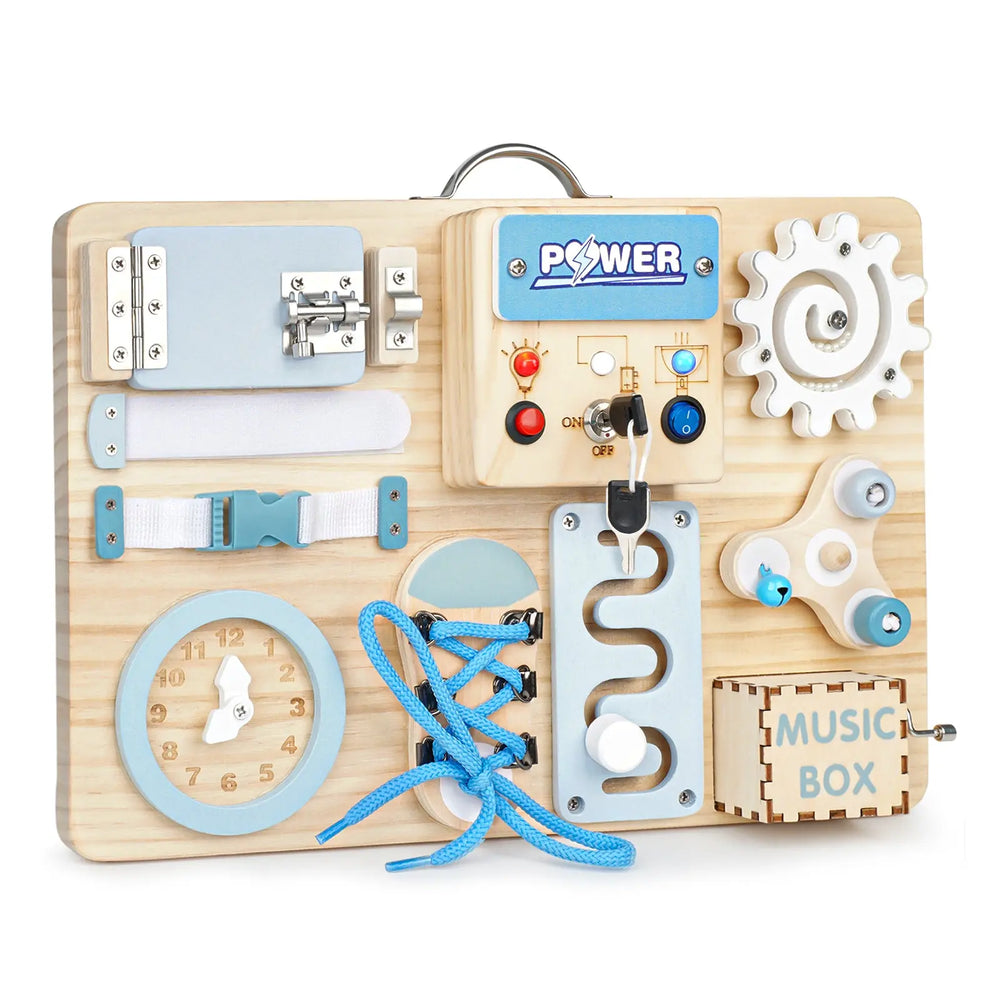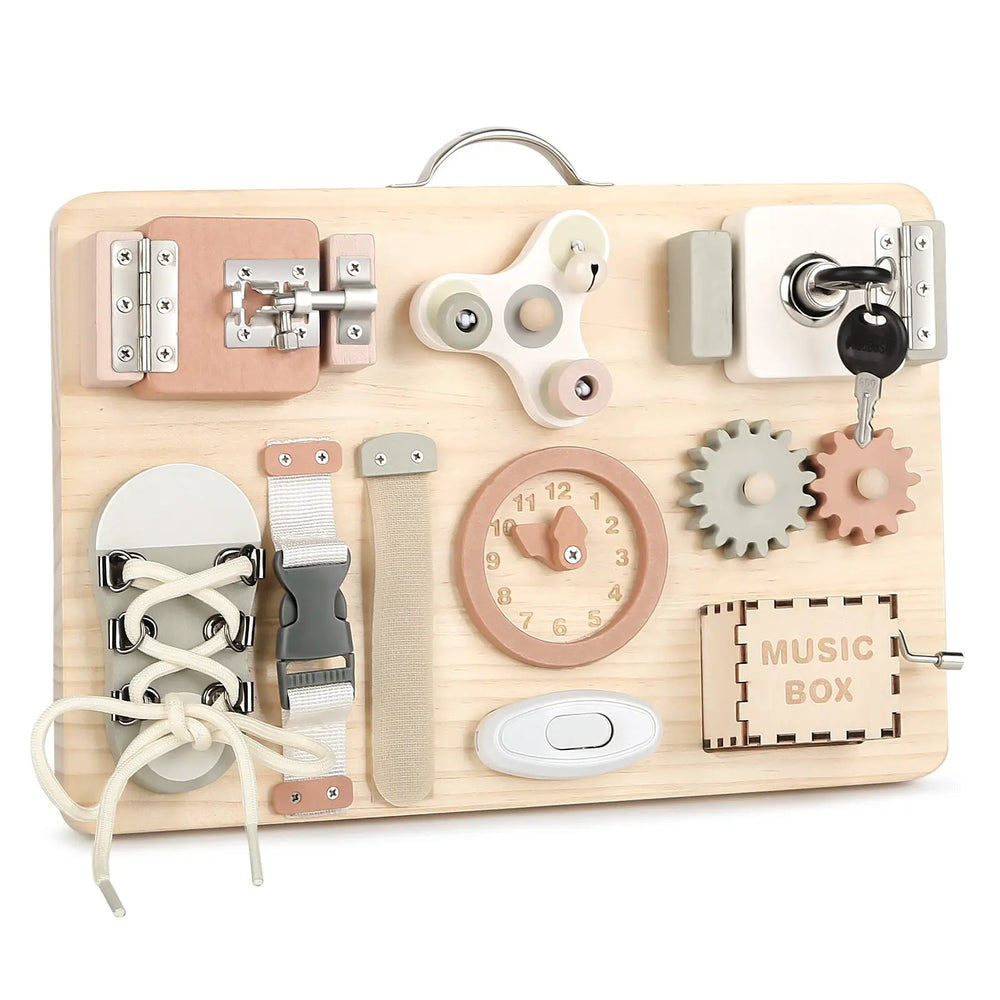Using Montessori Busy Boards to Soothe & Engage ADHD Kids

Children with Attention Deficit Hyperactivity Disorder (ADHD) often face challenges with focus, impulse control, and sensory regulation. Traditional learning environments can be overwhelming, but montessori busy board offer targeted developmental benefits for children with ADHD by combining sensory stimulation, motor skill development, and structured independent play.
The Power of Montessori Busy Boards for Children with ADHD
1. Enhancing Focus and Attention
- Busy boards provide tactile and visual stimuli (e.g., buttons, latches, LED lights) that captivate ADHD children’s attention, reducing distractions .
- Activities like switches, zippers, and mazes require concentration, gradually improving sustained focus .
2. Developing Fine Motor Skills
- Manipulating knobs, sliding buttons, and turning gears strengthens hand-eye coordination and dexterity—key for ADHD children who may struggle with precise movements .
- Tasks like pressing, pulling, and spinning mimic real-life skills (e.g., buttoning clothes) while boosting independence .
3. Sensory Regulation
- ADHD children often seek sensory input. Busy boards offer diverse textures (velcro, sandpaper) and auditory feedback (bells, clicks) to satisfy sensory needs .
- LED-light elements (e.g., in ) add visual engagement without overstimulation.
4. Promoting Structured Independent Play
- The Montessori approach encourages self-directed learning, allowing ADHD children to explore at their own pace in a predictable environment.
- Boards with clear cause-and-effect actions (e.g., opening a latch to reveal a hidden item) teach logical thinking.
5. Safe and Calming
- Non-electronic designs minimize overstimulation, while wooden construction ensures durability and safety .
- Certified boards for ADHD often avoid small detachable parts, reducing choking hazards .
Building on the proven benefits of Montessori busy boards for children with ADHD, designing one tailored to their unique needs requires thoughtful consideration of sensory input, skill-building activities, and adaptability.
How to Design a Busy Board for ADHD Children?
1. Choose the Right Base & Materials
Base
- Use a sturdy wooden board (plywood or sanded pine) sized appropriately for the child (e.g., 18"x24").
Safety First
- Sand all edges smooth.
- Ensure no sharp parts or small detachable pieces (choking hazards).
- Use non-toxic paint or sealant.
2. Select ADHD-Targeted Activities
Best Components for ADHD
| Skill Focus | Examples | Why It Helps ADHD |
| Fine Motor Skills | Zippers, buckles, knobs, gears, locks | Improves hand strength & coordination |
| Sensory Input | Velcro strips, textured fabrics, sandpaper, LED lights | Satisfies tactile/visual seeking |
| Focus & Problem-Solving | Mazes, latches, light switches, spinning dials | Encourages sustained attention |
| Calming Activities | Fidget spinners, stress balls, bead slides | Helps self-regulation |
Avoid:
- Overstimulating loud noises or flashing lights.
- Too many elements in a small space (keep it organized).
3. Organize for Maximum Engagement
- Left-to-right or top-to-bottom layout (supports logical thinking).
- Group related activities (e.g., all dressing skills together).
- Color-code sections to guide attention.
4. Test & Refine Based on Child’s Needs
- Observe: Which parts does the child interact with most?
- Modify: Swap out underused elements for more engaging ones.
Quick Adjustments for ADHD:
- If the child gets frustrated, simplify steps (e.g., larger knobs).
- If they lose interest quickly, add novelty elements (e.g., a hidden compartment).
Reference: DIY Busy Board: A Guide to Making Your Own

Integrating Busy Boards into Daily Life
Montessori busy boards are versatile tools that can seamlessly blend into a child’s daily routine, offering both structure and sensory support. For children with ADHD, consistency and purposeful engagement are key to managing energy levels and improving focus. Joyreal’s busy boards are particularly effective for daily integration due to their ADHD-friendly design.
The Joyreal montessori busy board stands out as an exceptional tool for children with ADHD, combining sensory engagement, skill-building activities, and thoughtful design tailored to support focus and self-regulation.
1. ADHD-Focused Features
Joyreal’s busy boards align perfectly with the needs of children with ADHD:
- Sensory Variety: Their boards include textured fabrics, zippers, latches, gears, and buttons to satisfy tactile-seeking behaviors while preventing overstimulation.
- Fine Motor Skill Builders: Activities like buckling straps, threading laces, and unlocking latches strengthen hand-eye coordination and dexterity.
- Calming Repetition: Spinning wheels, sliding beads, and toggle switches offer predictable, rhythmic motions that help reduce anxiety and hyperactivity.
2. Safety and Durability
Joyreal prioritizes child safety, a critical factor for parents of children with ADHD who may engage vigorously with toys:
- Smooth, Sanded Edges: Boards are crafted from splinter-free, non-toxic wood to prevent injuries.
- Secure Attachments: All elements (locks, knobs, etc.) are firmly fastened to withstand repeated use.
- Choke-Free Design: Small parts are avoided or securely integrated to meet safety standards.
3. Portable and Adaptable
- Compact Size: Joyreal’s boards are designed for easy transport, making them ideal for home, school, or travel—a key benefit for children who need consistency in routines.
- Age-Appropriate Options: Their collection includes boards for toddlers (1–3 years) with large, simple tasks and advanced models for older kids (4–5+ years) with STEM-inspired elements like circuit boards or calculators.
4. Parent and Educator Benefits
- Free Returns and Shipping: Joyreal offers hassle-free returns and free shipping, reducing the risk for families testing tools for ADHD support.
- Trusted Reputation: With a dedicated collection for sensory and educational toys, the brand emphasizes quality and developmental alignment.
How to Select the Right Joyreal Board
- For Younger Kids (1–3 Years): Opt for boards with large zippers, chunky gears, and simple latches.
- For Older Kids (4+ Years): Choose models with combination locks, timers, or interactive puzzles to challenge growing skills.
- Sensory Seekers: Prioritize boards with textured patches, bead mazes, or calming fidget spinners.
Conclusion
Montessori busy boards are more than toys—they’re bridges to learning and self-regulation for children with ADHD. By offering sensory engagement, skill-building, and independence, these boards turn challenges into opportunities for growth. As one parent noted, “It’s the first time my child sat still for 20 minutes—and he learned to tie his shoe!” In a world that often feels chaotic, busy boards provide a calming anchor, empowering children to thrive one latch, zip, and button at a time.
Maybe it will be helpful for you:
Recent Post

What Finally Helped My Toddler Speak Up?
If you’re a toddler mom, you already know how much emotional weight...

Joyreal Christmas Toys Deals 2025
Enjoy instant savings across nearly every category, from early lear...

How Wooden Montessori Toys Support a Sustainable Childhood
Most parents don’t say it out loud, but many feel the same quiet fr...

Top Christmas Gifts to Help Kids Communicate Better This Holiday Season
The holiday season brings joy, family bonding, and endless opportun...

How to Make DIY Printable Communication Boards
Communication is at the heart of every child’s development — and fo...

Top 5 Christmas Gifts That Bring Families Closer (2025 Guide)
Christmas isn’t just about the gifts — it’s about the moments we c...

Top Musical Christmas Gifts for Toddlers & Preschoolers 2025
Why Musical Gifts Are Perfect for Toddlers and Preschoolers Music h...

Joyreal AAC Devices Wholesale Partner
In today’s educational and therapeutic environments, speech therapi...

Joyreal AAC Device – Big Sale for Autism & Speech
Every Voice Deserves to Be Heard Imagine your child looking up at y...

How to Choose Safe & Educational Toys for Christmas 2025
When “Just a Toy” Means So Much More If you’re a parent, you know t...
